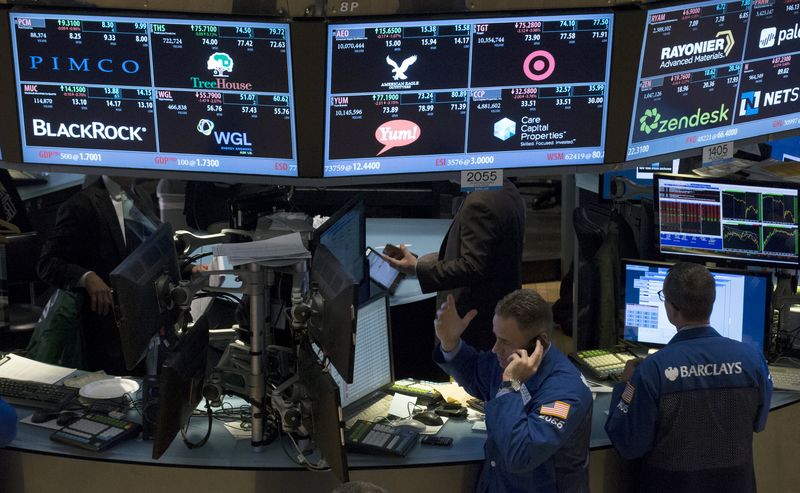Investing.com - Here are the top five things you need to know in financial markets on Friday, August 30:
1. U.S. futures point higher as trade news holds status quo
U.S. futures extended a previous rally, as the U.S.-China trade standoff remained the major market directional driver.
China’s Foreign Ministry said Friday that trade negotiating teams were maintaining effective communication at a daily news briefing in Beijing, adding no new information but also standing pat on a general sense of de-escalation.
The apparent cooling of tensions in both Beijing and Washington has sent the Dow up nearly 3% this week, consistent with a pattern of constant shifts in rhetoric and action that have sent stocks on wild swings this year.
Trading was expected to be light in New York on Friday ahead of Monday’s Labor Day holiday.
2. Bond yields pull back from record lows, yield curve inversion intact
The improvement in risk appetite appeared to halt a bond rally that sent yields to historic lows earlier this week.
Yields on U.S. Treasuries, which trade inversely to prices, were higher on all maturities of 3 months or more.
But the “dreaded” yield curve inversion, which some consider a leading indicator of recession, remained intact with the yield on the 10-year Treasury hovering about two basis points below that of the two-year. Earlier in the week that spread hit levels not seen since 2007.
Read more: Dollar Snaps Back As Yields Recover - Kathy Lien
3. Inflation, consumer health and manufacturing activity in focus
The update on the health of the U.S. consumer and the pace of consumer prices due at 8:30 AM ET (12:30 GMT) will help traders assess whether the slowdown in the global economy is beginning to seep into the U.S. economy and provide further information for the “data-dependent” Federal Reserve to evaluate just how much, if any, further policy easing will be required in September. Markets have a quarter-point reduction fully priced in.
The Fed’s preferred inflation measure, the core PCE price index excluding volatile food and energy costs is expected to have risen by 0.3% in July from June, and by 1.6% from a year earlier. Personal income is forecast to have slowed although personal spending is expected to accelerate.
In other data, the Chicago purchasing managers’ index will provide a glance at the state of manufacturing activity in the Midwest at 9:45 AM ET (13:45 GMT), while, 15 minutes later, the University of Michigan will release its final reading on consumer sentiment in August.
4. Oil on track for solid weekly gain as markets brace for Dorian
Oil traded lower but was still well on track for its biggest weekly gain since mid-July as a standoff in the U.S.-China dispute, OPEC-led supply cuts, ongoing Middle East tension and a plunge in U.S. crude inventories buoyed prices.
With U.S. crude on track for weekly gains of 3.8%, markets are bracing for the arrival in Florida of tropical storm Dorian. The National Hurricane Center predicts it will become a Category 4 Hurricane as it makes landfall on Labor Day, raising concerns that offshore U.S. crude producers may shutter output.
5. ECB under pressure from hawks, despite low inflation
Euro zone inflation remained stuck far below the European Central Bank’s target, cementing expectations of further stimulus measures to be announced next month, although some policymakers have been arguing against further easing.
Sabine Lautenschlaeger, an ECB executive board member, insisted it's "much too early for a huge package” in a Wednesday interview released on the ECB website on Friday. On Thursday, fellow hawk Klaas Knot had said that market expectations for easing next month were "overdone".
German central bank head Jens Weidmann had said last weekend that he also had reservations about the need for a dramatic intervention, warning especially against a resumption of bond purchases.
-- Reuters contributed to this report.
